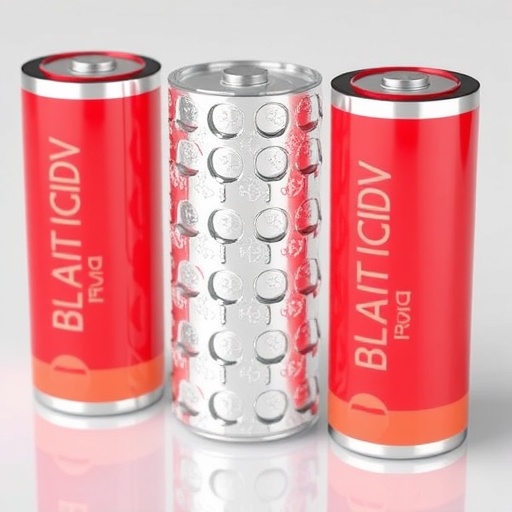Recent advancements in battery technology have illuminated a path for a sustainable energy future. A leading research team from the Tokyo University of Science, under the guidance of Professor Shinichi Komaba, has unveiled a groundbreaking approach to enhancing the stability of sodium-ion batteries (SIBs) through the innovative doping of calcium into the sodium-ion layer of Na2/3[Fe1/2Mn1/2]O2, commonly referred to as NFM. This development could significantly impact the future of rechargeable batteries, an essential component of modern technology.
Rechargeable batteries have become central to daily life, ubiquitous in devices ranging from smartphones to electric vehicles. Among the various battery technologies, lithium-ion batteries reign supreme due to their high energy density and extended lifecycle. However, the increasing demand for lithium poses a challenge due to its limited availability and geographic concentration. This scarcity drives the scientific community to seek viable alternatives that maintain high performance while being economically and environmentally sustainable.
Sodium-ion batteries have emerged as a promising alternative to lithium-ion batteries. Sodium is abundant and inexpensive, commonly found in seawater, making SIBs particularly attractive for large-scale applications, especially in grid energy storage. Despite the advantages of SIBs, they encounter performance limitations primarily due to the instability of cathode materials when exposed to air and moisture. This instability leads to decreased efficiency and shorter life cycles, presenting a significant hurdle for widespread adoption.
The research team’s recent findings, published in the Journal of Materials Chemistry A, reveal that doping NFM with a small amount of calcium dramatically enhances its stability when subjected to air and moisture. By substituting up to 2% of sodium ions with calcium ions, the team achieved a remarkable improvement in performance. Experimental results demonstrated that while traditional NFM lost a staggering 35% of its discharge capacity following just two days of air exposure, the calcium-doped NFM maintained its discharge capacity intact.
A critical factor underlying this enhanced stability is the behavior of calcium within the NFM structure. According to detailed surface analysis conducted by the research team, the improved stability is attributed to the spontaneous migration of calcium ions upon exposure to air. This process leads to the formation of a protective calcium-enriched surface layer that effectively mitigates decomposition reactions that degrade performance. The dual action of restricting sodium ion deintercalation and suppressing the sodium/hydrogen ion exchange reactions significantly contributes to the integrity of the battery’s function.
Doping NFM with calcium doesn’t only enhance stability; it also benefits the crystallinity and interlayer spacing of the material. Improved crystallinity enhances electrochemical performance, creating a more efficient battery capable of delivering superior power. Furthermore, the protective layer formed by the doping process ensures that NFM remains shielded even during storage before battery assembly, improving the material’s usability prior to deployment.
The implications of this research reach far beyond the laboratory environment. By utilizing abundant calcium in the synthesis of sodium-ion battery materials, researchers can create more sustainable battery technologies without significantly increasing manufacturing costs. This breakthrough aligns with the global push for greener energy solutions capable of addressing the increasing energy demands without depleting finite resources.
Another highlight from this research is the significant contribution of a second-year doctoral student, Ms. Monalisha Mahapatra, who played an instrumental role in these findings while working under the Japan International Cooperation Agency (JICA) program. Her efforts epitomize the collaboration and innovative spirit nurtured within the Tokyo University of Science, which emphasizes supportive structures in research to foster new ideas and breakthroughs.
In addition to enhancing performance, this research potentially resolves lithium supply chain issues by shifting the focus to sodium—a far more abundant element. This transition would ensure a stable supply of materials crucial to the production of rechargeable batteries, thereby supporting the rapidly growing electric vehicle market and other technological advancements reliant on battery power.
The study lays the groundwork for future investigations into the potential of doped materials in the field of sodium-ion batteries. Researchers are optimistic that further exploring the doping mechanisms will uncover additional enhancements in battery stability and performance, potentially leading to innovations that could be applied across various types of energy storage technologies.
In closing, the research accomplished by Professor Shinichi Komaba and his team at the Tokyo University of Science signifies a transformative step towards deploying sodium-ion batteries in real-world applications. Their findings not only tackle the immediate stability issues associated with sodium-ion technologies but also represent a strategic advance in the broader quest for sustainable energy solutions.
As we move forward in an era increasingly reliant on rechargeable batteries, the implications of this research could redefine energy storage and consumption patterns, presenting new avenues for cleaner, more efficient power systems that meet global energy demands.
Subject of Research: Sodium-ion batteries
Article Title: Enhanced air stability by calcium doping in Na2/3[Fe1/2Mn1/2]O2 cathode material for Na-ion batteries
News Publication Date: 29-Aug-2025
Web References:
References: DOI: 10.1039/D5TA04742K
Image Credits: Professor Shinichi Komaba from Tokyo University of Science, Japan
Keywords
Batteries, Sodium-ion batteries, Energy storage, Renewable energy, Calcium doping, Electrochemistry, Research breakthroughs, Sustainable technology, Cathode materials, NFM.
Tags: alternatives to lithium-ion batteriesCalcium doping in sodium-ion batterieschallenges in battery performanceeconomic viability of sodium-ion batteriesenvironmental impact of battery productiongrid energy storage solutionsNa2/3[Fe1/2Mn1/2]O2 cathode materialsrechargeable battery innovationssodium as a battery materialsodium-ion battery stability enhancementssustainable battery technology advancementsTokyo University of Science research breakthroughs





